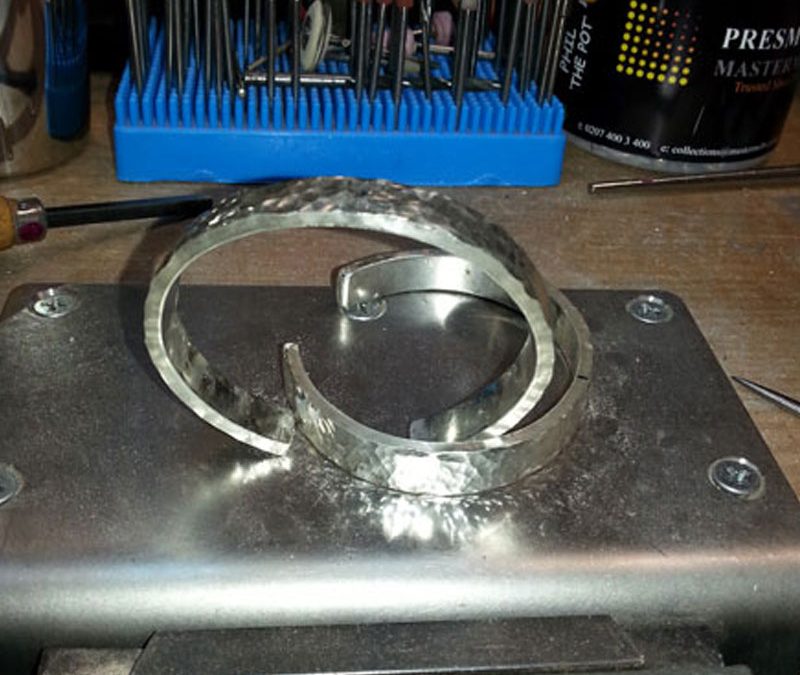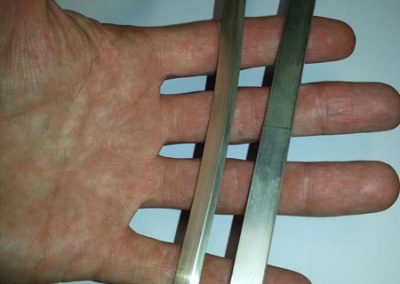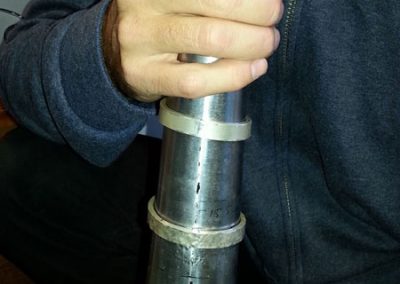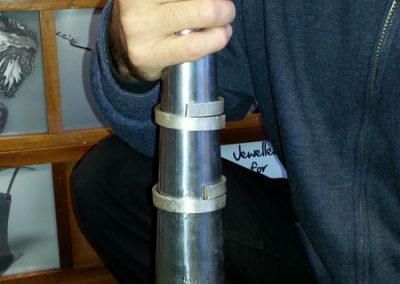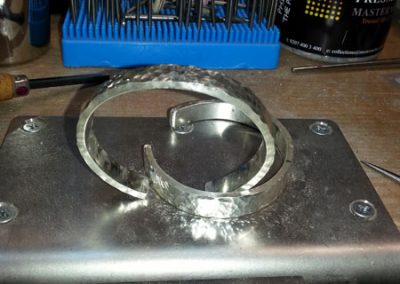These heavyweight silver cuffs were made from bars of solid sterling silver. They a heavier than normal but still have a great feel to them. With a hammered finish they will age well and provide years of wearability.
The stages of forming these silver cuffs:
- Order long enough stock to start with!
- Work out how much would be needed initially and cut the silver with a saw.
- Mark the manderel at the size needed.
- Rough form the silver over a manderel – with the silver being this thick, having an extra person on hand to hold the manderel and rotate it at the right time is a real bonus. Summon the man-power!
- Fine tune the shape and take it down past the required size.
- Texturing the surface of the cuff is done at the same time and the overall length increases as the piece is hammered
- Measure again and then trim off the excess silver for each cuff
- Smooth down the ends so that it is not rough on the tender parts of the wrist – this is important during the putting on and taking off process. Any burrs here will mean a nice red mark from the abrasive action. Measure again.
- The piece is then given a finally polish and can be coloured at this point too.
-

Solid sterling silver stock was used.
-

A very manual process, forming silver over a manderel.
-

The bending of these sterling silver bars is a 2-person job!
-

Silver cuffs, rough formed and ready for trimming.
-

With the cuffs at the right lengths, they are then finished.
-

Getting closer to a finished cuff
Cuffs are a pleasure to wear if the sizing is correct for your wrist and there are an endless variety of finishes and styles. Although they can be squeezed tighter, these open bangles designs need to be sized correctly to minimise the amount of effort needed to get them on and off your wrist, and still have them stay secure when being worn.
Cuffs can take quite a beating in everyday life as they are often subjected to a lot of opening and closing flex during their lives which puts a lot of stress on them. The spot that takes the most strain is the mid-point between the two ends although it’s not usual for a weaker spots elsewhere to go first. This is where most of the flexing happens when putting it on or taking it off, which work-hardens the metal and it becomes brittle. Eventually the metal starts to fail and cracks appear. Cuffs having a stone set at the mid-point makes it more difficult to repair when the piece finally gives up as you’ve got something covering up the weakspot.
The thinner the material the shorter the time it will take for the metal to wear. These cuffs are lovely and thick and will handle a lot of daily wearing – while also being easy to repair when eventually the time comes. By ensuring the size of the opening relative the wrist it is going to be worn on is optimal, you can keep the stresses to a minimum.
I don’t want to put anyone off getting a cuff made as they are such a rewarding piece of jewellery to wear but they are different to other pieces that have hinges or chains to provide the pivot point.

